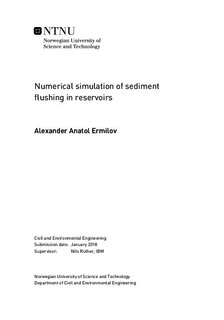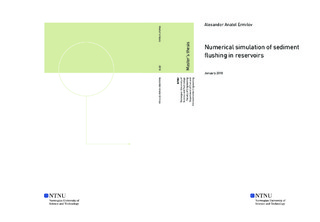| dc.description.abstract | As we saw, sediment can be a major factor in decreasing the lifespan, efficiency and profit of a hydropower plant. Countries and companies have to have countermeasures against the sedimentation, where high yields are expected. However, this is only possible with a firm knowledge base of these processes. For this, beside field measurements, physical and numerical models are great assets.
In my thesis, I was supposed to test the TELEMAC-MASCARET modelling system for reconstructing a pressurized sediment flushing scenario, which was carried out in a laboratory physical model.
First, I carried out a test run with Telemac-3D (flow module) and Sisyphe (sediment transport module) with the well documented and widely known Yen study, to get familiar with the system. After that, I moved on to the objective.
As Telemac is a free surface flow model, the question was how to use it for the pressurized flushing. Finally, the new culvert function appeared to be a possibility for that. However, both the initial setup and the source code required some changes to make it work. The model managed to show a similar culvert discharge-time curve as the laboratory measurements. The changes in the setup of course led to differences between the laboratory and the simulated evolution results.
In spite of this, the flow conditions and the fact of an evolving flushing cone made the method look promising. The for-and-aft evolution size and the evolution speed showed agreement with the measured data. However, the evolution parallel to the cross gate showed bigger differences.
Beside the evolution, I also represented the velocity and the bottom shear stress field results of the simulation, but without measured velocities, I could not compare them.
Finally, I evaluated the model and presented further steps and ideas to improve it and reach a higher quality agreement between the simulation and the laboratory measurements. | |

